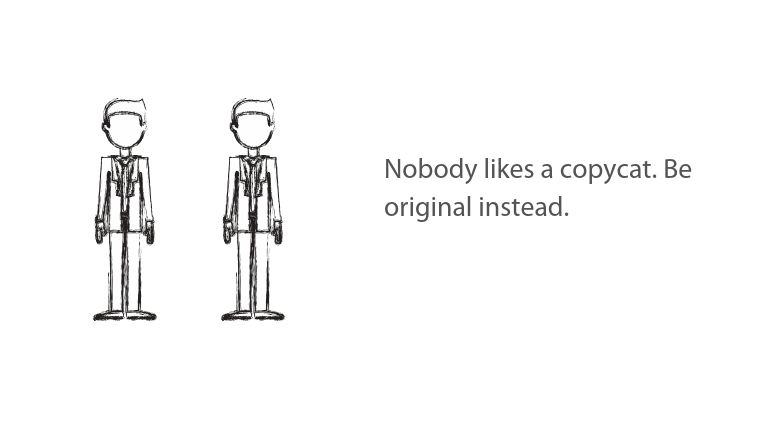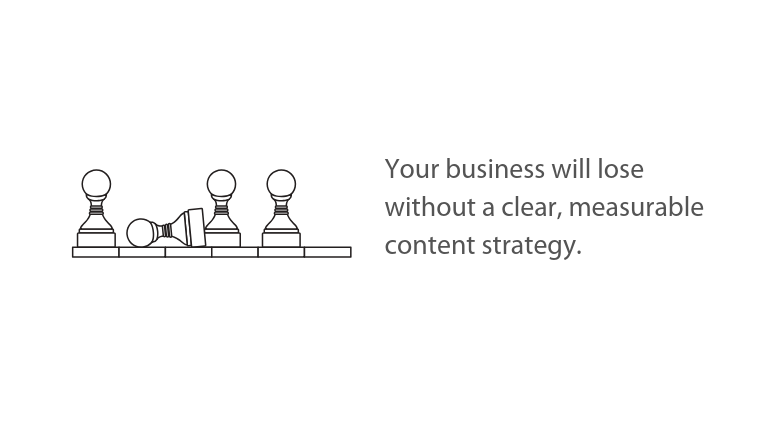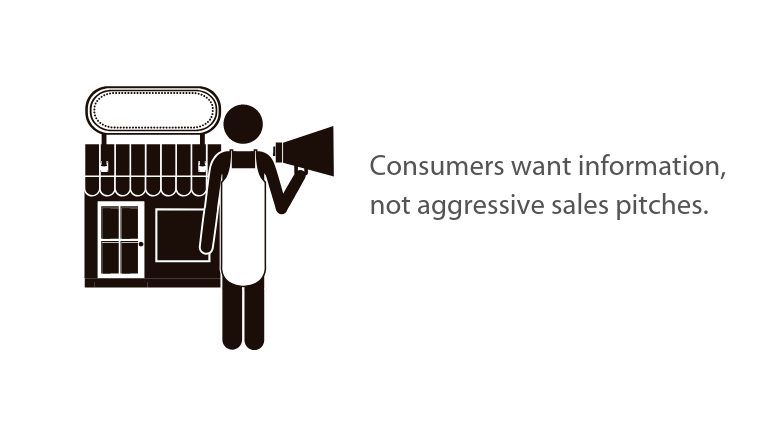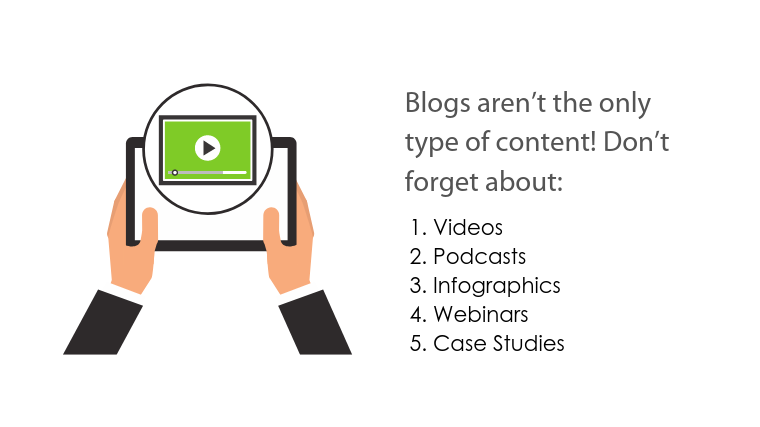Numerous marketing experts have told you that you need to create content to boost the search rankings of your small business website and to drive your small business marketing campaigns.
But where do you start? Blog posts? More web pages? Lots of keywords?
Content marketing is about more than writing blog posts focused on a keyword or phrase.
Knowing some of the common mistakes that people who are new to content marketing make can help you create more effective blogs, web copy, videos, and more to achieve your company’s goals. We’ve uncovered seven of the most common. Keep reading to discover them.
1. You copy everyone else and have no original blog or website content

One way to help set your organization apart from competitors is through unique content.
When what you create are copies of what everyone else is doing or doesn’t take basic information to a deeper level, visitors to your site won’t remember your organization.
Writing original material like case studies and whitepapers will highlight your knowledge of the topic and your dedication to providing valuable insight to your customers.
Plus, by creating something unique, you’ll be a content marketing leader. According to Aberdeen, the annual traffic growth rate is nearly eight times higher for content marketing leaders than it is for those who aren’t.
2. Not setting any marketing goals
Having specific marketing goals and KPI’s – key performance indicators gives your content direction.
For example, your organization may want to increase your inbound lead generation.
Your marketing goals determine how you approach creating assets that communicate your message. They will help you craft content based on what your potential customers want and need to know as well as how it will impact leads and ultimately conversions, and sales.
In addition, to general marketing KPI’s, every piece you create should have specific goals. Some copy may be designed to prompt further action, such as signing up for a newsletter or boosting customer engagement.
Along with guiding the content you create, setting marketing goals can help determine whether your marketing efforts are working.
3. You have no content strategy

Your KPIs will provide the foundation for your content strategy.
The goals are what you want to accomplish, and your strategy is the way to achieve your goals.
A content strategy should include what data and analytics you look at to determine whether your content is successful.
Even if you have a marketing company that tracks and reports on the data for you, make sure you know and understand how to analyze the information they bring you. That way, you know you’re tracking the right metrics and not so-called vanity metrics.
Also, your strategy should outline how you distribute information and what CTAs (calls to action) are included with your content to prompt potential customers to take the next step to become customers.
4. Being too focused on keywords and Google rankings
Optimizing your content for search engines is essential. However, it’s not a good idea to be so focused on keywords that you lose the message and potential customers.
Keywords aren’t the only important aspect of SEO. Unique high-quality content also matters.
Once a potential customer clicks on the link, they need to be drawn in by the content.
Your content should also make them want to take action such as leave their contact information, download an Ebook, or make a purchase.
Besides lead generation, you can use your blog posts, images, and videos to achieve other goals, such as to earn links and to capture other Google Search features like answer boxes, top stories, Google Images, and other search features.
5. Sell! Sell! Sell! is the only message people get from your content.

Making a sale is just one part of the marketing process. A typical customer journey starts with gaining knowledge.
If your blogs, articles, and other content all sound like a commercial or are all about you, then visitors will be turned off by your website and your business.
Your marketing content should include every aspect of the marketing or sales funnel and the customer’s journey with your organization. And map your content to ensure you familiarize yourself with which types of content are more suited to each portion of the funnel.
◆ Awareness stage content includes things like blog posts, faq’s, and whitepapers.
◆ Interest stage content includes assets like your homepage, your product and service web pages, and email newsletters.
◆ Evaluation stage content will be webinars, presentations, and buyer’s guides.
◆ Purchase stage content includes testimonials, pricing, and things like the checkout or shopping cart page on an e-commerce site.
6. Making your content all about you and not your customers
Even if your content addresses the industry and your products well, it can fall flat if you don’t think about your customers’ perspectives.
When you develop products and services, you have a target demographic in mind. These are the people most likely to want and need what you have to offer.
You should use the same mentality when you develop marketing assets. Think about who your customer is, what words and phrases they use to search for what they need, and what problems they have that your organization can solve.
Create customer personas to make content creation simpler.
Use what you already know and survey existing customers to gain as much data as possible on what their pain points are.
Hang out on social media and forums like Reddit.
Be a fly on the wall on threads related to your industry. Answer questions and respond to comments. These last actions have the added advantage of helping you build relationships with potential customers.
7. Treating content as just blog posts instead of repurposing content.
One of the benefits of content marketing is that you can repurpose this like blog posts into other types of material.
A topic you develop shouldn’t be used only for a blog post or an email blast.

Create videos, infographics, and podcast episodes around the same subject. And don’t forget to share and promote your content on social media.
By repurposing your content, you can reach different customers in different ways.
That increases the chances that your target demographic will see and connect with your content. It also helps keep it evergreen.
Final Thoughts on Content Marketing
Whether you’re new to content marketing or you’re trying to take your marketing to the next level, this essential tactic is essential to connecting with customers and generating inbound leads.
By creating original content, thinking about more than keywords, creating and following a content marketing strategy that includes setting goals and tracking the right metrics, utilizing customer personas, and repurposing content, you’ll be on track to an increase in website traffic, sales, and revenue.
We want to hear from you!
How has content helped your business? What about content marketing disasters? Share your stories in the comments section below.

